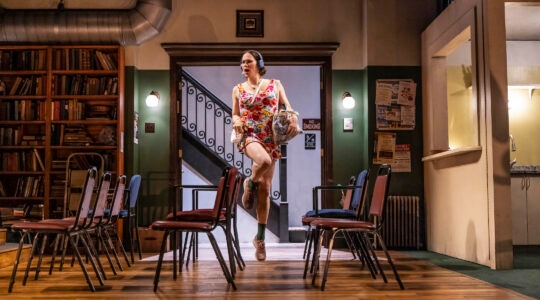At an Italian café on a quiet stretch of Miami’s Mid-Beach, I chatted with a waitress from Slovakia.
She had had enough of Bratislava’s long, gray winters and the heavy fog that blankets her homeland in gloom. South Florida’s bright sunshine, the waitress explained, was like a drug she can’t do without.
The busboy chimed in to agree: He was from Lima, Peru, a drizzly city where the ocean is too cold for good swimming. We were joined by the Slovakian’s boyfriend, a Puerto Rican who runs the Cuban café next door, serving up cafecitos since his island house was destroyed in a hurricane.
If South Florida is more polyglot than ever, it is also more Jewish. I thought of this as I saw visibly observant families all over Greater Miami: at the mall in the suburbs, strolling along Collins Avenue, at the park and the zoo and the Publix.
It was striking in a month when reports have filtered in of European assaults on visible Jewishness — a French Holocaust survivor murdered in Paris, an Israeli Arab attacked on the streets of Berlin when he wore a kipa (as an experiment, it turned out, but the point was made).
In much of Europe, Jewishness is an exception. In Miami, it is an integral part of the visual landscape. Every year there are new kosher markets and frozen yogurt shops, yeshivas and Torah centers, Jewish names on museum wings and black-clad families out for a stroll.
I closed my last column, on Fort Lauderdale, by commenting on the way great cities constantly evolve. But whereas growth transforms some cities so that they are virtually unrecognizable, Miami just becomes more like itself.
It feels Jewish in places where it never felt much of anything — in formerly derelict zones of downtown and Brickell, where sidewalks are no longer just for show, and along stretches of northern barrier beach, as synagogues sprout alongside ever-higher towers branded with celebrity logos (Armani condos, anyone?).
Miami always had a Latin flavor, but it is no longer Cuban by default. The Hispanic city is now peppered with accents from all over South America; I met Brazilian Jews, Venezuelan political refugees, adventure-seeking Chileans.
As international as it has always felt, Miami is also more and more a laboratory for the trends shaping modern America. Witness that revitalizing downtown, where high-rises and cafés are catering to millennial tastes for urban living. Nowhere is the tide turning faster against the 20th-century grain of Sun Belt suburbanism.
Even in this tourist mecca, you can feel the decline of American retail. I used to love browsing for dresses amid the galleries and restaurants on Lincoln Road. Now, despite the ever-present throngs, too many storefronts are shuttered or moribund or irrelevant, like the cellphone outlets hawking American SIM cards.
Shopping has given way to eating as a pastime. Outdoor tables are full all-day long, from the boîtes along Ocean Drive to tiny hipster joints in Buena Vista, wedged between Little Haiti and the Design District.
And the arts are maturing. Miami was always an artier town than Northerners gave it credit for; writers and sculptors have flocked here since the days when John and Joanna Bass, Jewish immigrants from Vienna, invested their sugar cane fortune in the city’s first modern art museum.
Big-time philanthropists have now been investing here for generations, and the scene has flowered. The Bass Museum of Art re-opened last fall after a major renovation that added several galleries; when I visited, several rooms were devoted to the fluorescent-hued installations of Argentine-Israeli artist Mika Rottenberg.
En route to see more art, we drove north along the waterfront, in the shadow of futuristic towers reminiscent of Dubai. It felt like time travel to detour into the jungly thickets of Oleta River State Park, a wild green taste of old Florida, where a quiet inlet beach is perfect for dipping little toes.
Back in Miami proper, this month saw the re-opening of the Museum of Art and Design at Miami-Dade College. Inaugural exhibitions include “By The People: Designing A Better America” and “Living Together,” a multidisciplinary series featuring concerts, film screenings, lectures and workshops across Miami.
Billed as “reflecting the cultural, social and political realities of how we live now,” and featuring a number of Jewish artists, the series could not have found a more fitting location than Miami — a city where America’s grandest yearnings attract a continuous flux of ideas and arrivals, and where each new incarnation only intensifies its allure.
The New York Jewish Week brings you the stories behind the headlines, keeping you connected to Jewish life in New York. Help sustain the reporting you trust by donating today.




